Most of the time, you get suggestions to get a blade with a higher tooth count. But why? Are more teeth always better for cutting materials? If so, why are there blades with fewer teeth available in the market? What’s the difference between 60 vs 80 vs 100 tooth miter saw blade?
A blade with a higher teeth count will cut materials relatively smoothly but not fast. On the contrary, a lower teeth count blade will cut faster but may leave a rough cut on the material. Which blade is better depends on the material you are cutting, the type of cut, and what you want out of the cut.
This requires an elaborate discussion. If you don’t want to miss out on the explanation, make sure to read the entire article.
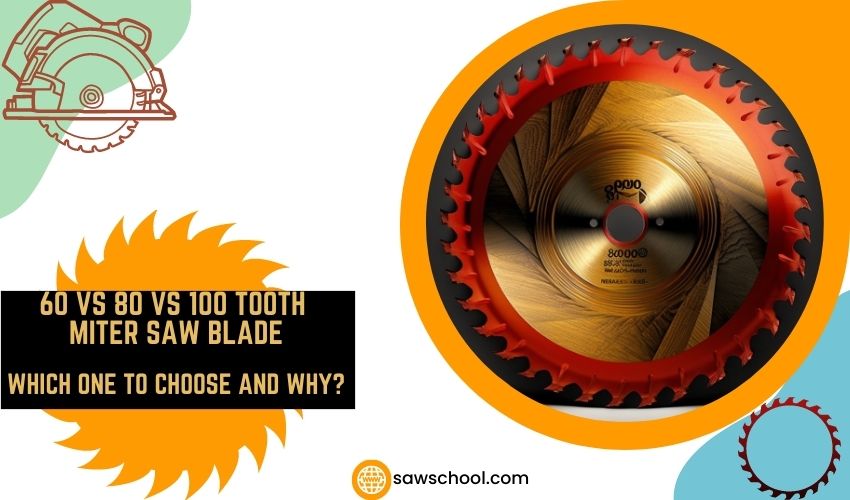
60 Vs 80 Vs 100 Tooth Miter Saw Blade
First of all, even with the same tooth count, the outcome can vary depending on the blade size and material. So, for comparison’s sake, let’s assume that all three blades are of similar size and made of the same materials.
60 Tooth Miter Saw Blade
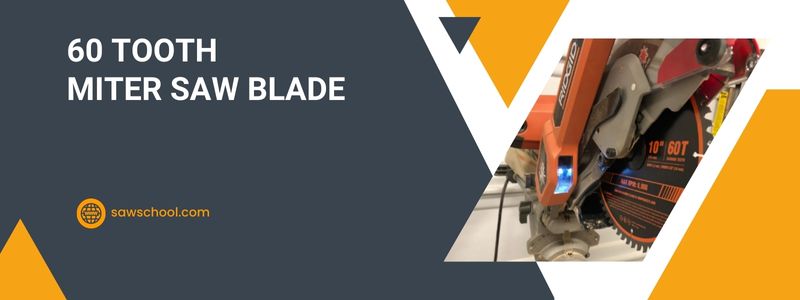
A 60-tooth miter saw blade is often used on different occasions. It comes with a few benefits as well as some disadvantages. The first thing to determine here is what cut you are going for.
Are you going for a rip cut or a cross-cut?
When you rip cut, you are cutting with the grain. In this situation, a blade with a lower teeth count, for example, a 60-tooth miter saw blade, would be appropriate. The primary benefits you will enjoy are faster cuts without getting the blade heated.
When you are ripping hard materials like hardwood, you can go for a 60-tooth blade. Even though the cut is rough, it won’t matter. In other words, if you want to cut materials that do not require a super smooth finish, you can rely on a 60-tooth blade.
80 Tooth Miter Saw Blade
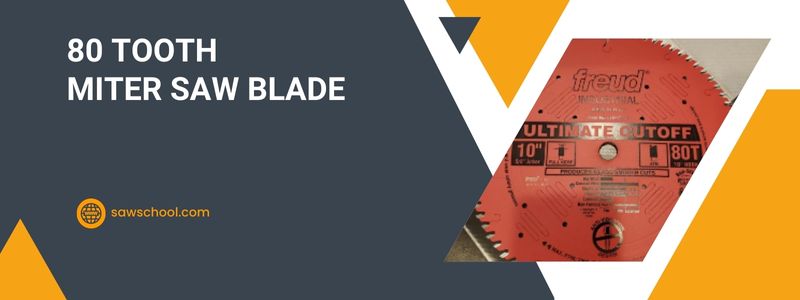
The 80 tooth miter saw blade is a more common choice among miter saw users. The reason is smooth cuts. Even with all the downsides, an 80 tooth blade will offer smooth and clean cuts to delicate materials.
So, when you want precision in your cuts, it’s better to go with a blade with a higher teeth count. But then, you too, have to be delicate with the procedure. First of all, the cut will be slower. You can’t cut as fast as the 60 tooth blade with an 80 tooth blade. Moreover, the blade will get heated more, so you will need extra caution.
An 80 tooth miter is also suitable when you are making crosscuts. Crosscuts are made against the grain and require precise and steady cuts. So, if you want to avoid chipping or breaking the material, 80 tooth count is perfect for you.
100 Tooth Miter Saw Blade
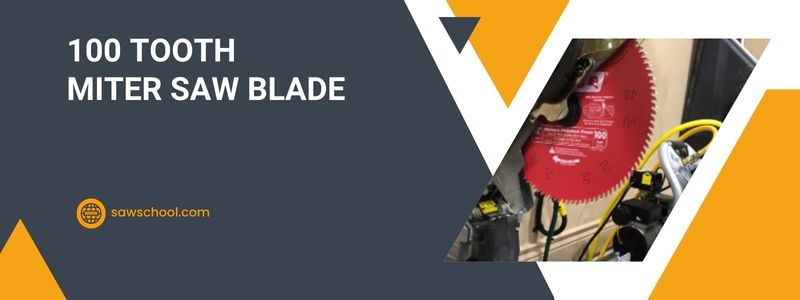
A 100 tooth miter blade is not a common choice to go for. It’s only suitable for cutting extremely delicate materials. For instance, when you are cutting MDF boards, there’s always a chance of chipping or breaking the material because of how MDF boards are structured.
This is where a high tooth count blade comes in. Note that tooth count is not the sole feature to consider when getting the best blade for MDF. If you use a table saw instead of a miter saw to cut MDF boards, check my article on the best table saw blade for cutting MDF.
As for the downsides, because a 100 tooth blade has more teeth compared to the previous two, it will cut comparatively slower and get more heated. On the positive side, you will get smoother cuts on delicate materials.
60 Vs 80 Vs 100 Tooth Miter Saw Blade: The Verdict
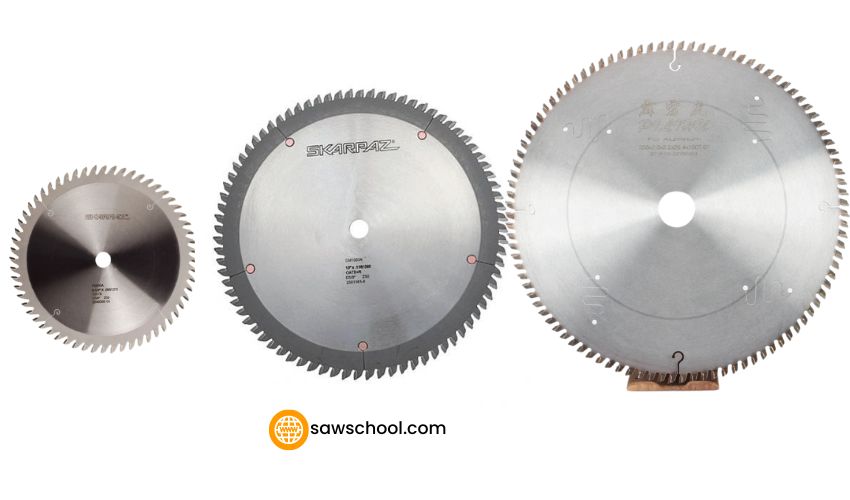
So, which one is better among these three and why? The answer varies depending on several factors. The first thing to do before deciding on the best blade is to set the scene. In simpler words, you have to determine what you will be doing with the blade and what outcome you expect.
Let’s say, you are cutting hardwood. You have a large load of material to rip, and smoothness is not your primary concern. For this situation, you should go for a blade with fewer teeth count. For instance, a 60 tooth blade will be perfect.
On the contrary, let’s say you are dealing with delicate materials like plywood, PVC, or MDF boards. You need the cuts to be as clean as possible because these materials will break or chip if you make them go through a rough cut. In these cases, you must go for a blade with higher teeth count. For instance, an 80 tooth blade or a 100 tooth blade will be more suitable for this situation.
To summarize the entire article, the best tooth count isn’t a constant thing. It changes depending on various factors.
What Other Factors To Consider For A Miter Saw Blade?
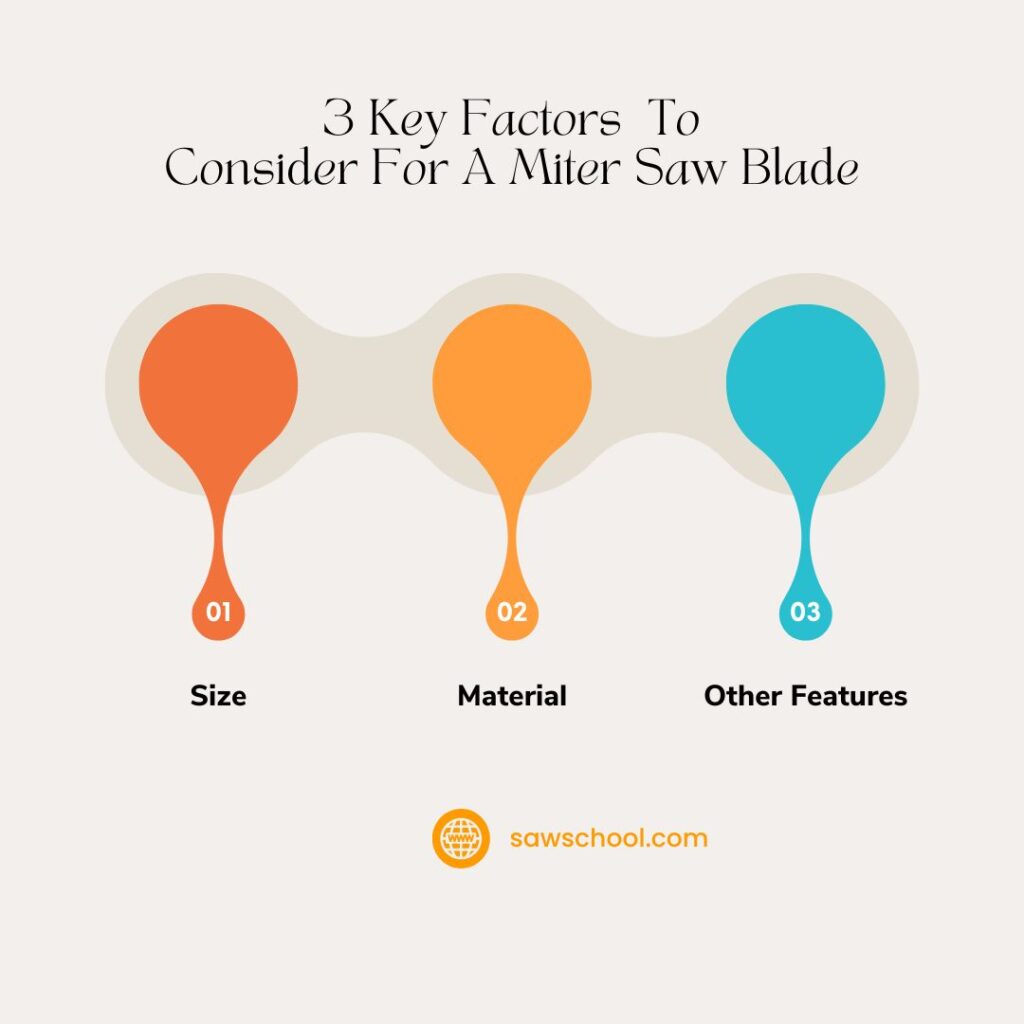
As I have mentioned earlier, tooth count is not the sole determinant of whether a blade will perform well or not. You need to think about every quality. Let’s take a look at what that list contains.
Size
Miter saw blades come in various sizes. The most common ones are either 10-inch or 12-inch. Regardless of what size blade you are going for, you have to make sure that the blade is compatible with your miter saw.
If you can use several sized blades with the same miter saw, consider the material you’re cutting.
Material
The blade material is crucial for several reasons. For starters, it decides whether the cuts will be smooth and clean or not. In addition, the material is also responsible for improving the blade’s longevity.
There are several materials used for making miter saw blades. The safe option is to stick to carbide. It can be mixed with other materials like stainless steel. Sometimes, only the tips of the blade are made of carbide.
Other Features
The other attributes you need to look at depend on your specific criteria. For instance, the price depends on your budget. Whether you want stabilizer features on your blade also depends on your preference.
After ensuring that the core qualities are locked, then you can go on to consider other attributes. If you want more details about what to look for in your miter saw blade, check out this article from SAWgeeks.
Frequently Asked Questions

What is an 80 tooth saw blade used for?
You can use an 80 tooth saw blade for several purposes. One excellent example is when you are cutting plywood for kitchen cabinets or other pieces of furniture. The higher tooth count ensures a smooth cut, which is mandatory for building furniture with delicate materials like plywood.
Is it better to have more teeth on a miter saw blade?
Not necessarily. If you are ripping rough materials that do not need smooth cuts, a higher tooth count isn’t significant. In addition, you can cut materials faster when you are using a lower tooth count blade.
Nonetheless, delicate materials which are more prone to breakage will require a blade with a higher tooth count. They require smooth cuts to avoid chipping which can only be ensured by a blade with a higher tooth count. The same goes for when you are crosscutting a material.
How do I choose a miter saw blade?
The attributes you look for to determine which one is the best miter saw blade will vary depending on what you will be cutting with the blade. However, some common features that every miter saw blade should have are sturdy build quality, reasonable price, proper tooth count, and high-quality material.
After making sure that the blade has these basic qualities, you can move on to more advanced features like anti-vibration slots.
What saw blade makes the smoothest cut?
Crosscuts blades are particularly suitable for smooth cuts. They have a higher teeth count which means there is less space between the teeth. This allows the blade to remove less material during the cut, resulting in a smooth cut.
The same can be said when you want to avoid breaking or chipping the material. Nonetheless, a blade with a higher tooth count tends to get hotter compared to a lower tooth miter saw blade. So, make sure that you are being careful with your crosscuts.
Final Words
This argument between 60 vs 80 vs 100 tooth miter saw blade explains why it’s important to set your expectations before investing in a miter saw. If you Are using the wrong blade for a particular activity, there’s no good in blaming the tooth count.
The tooth count is designed specifically for different reasons and different materials. So, decide what materials you will be cutting and what outcome you are expecting from the blade. Then, pick a blade that will be worth your money.
